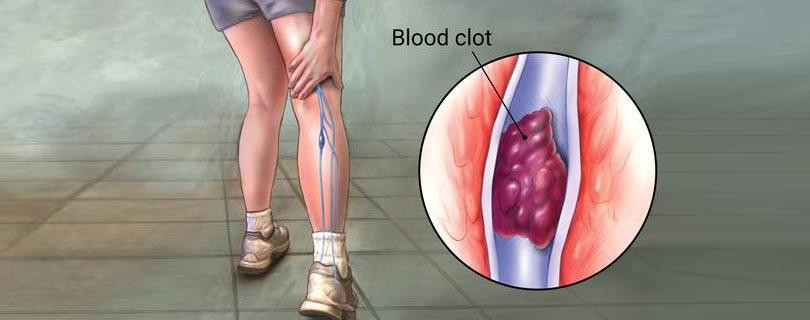
Deep Vein Thrombosis (DVT) or phlebothrombosis is a disease in which a blood clot-thrombus is formed in the lumen of a vein from the deep venous system. This causes a secondary inflammatory reaction that gradually involves the thrombus, the venous wall and the surrounding tissues.
DVT remains one of the most significant problems of public health. The incidence of the disease is high and increases with age, with women being more often affected.
Phlebothrombosis can manifest with swelling, tension and less often pain, but it can also be asymptomatic, which is why the disease often remains unrecognized.
What are the risk factors?
Many factors can increase the risk of developing DVT, namely:
What are the symptoms?
• Edema of the affected limb (most often one-sided). A suddenly developed massive swelling of the limb with a pronounced volumetric difference is the most important, and sometimes the only, symptom.
• Limb tension
• Pain (which is optional) and is usually described as a dull ache and/or discomfort. It can occur at rest and/or during movement.
• Change in skin color (optional).
• An increased local temperature or even a slight general temperature, as well as a rapid pulse, are possible.
• Appearance of superficial dilated venous collaterals
Deep vein thrombosis can occur without noticeable symptoms, which is why it often remains unrecognized.
How is DVT diagnosed?
In order to diagnose deep vein thrombosis, a physical examination is carried out by a specialist doctor (vascular surgeon or angiologist). At his discretion, a number of studies can be done:
• CW-Doppler and Duplex Color Doppler ultrasound methods are most widely used in daily practice for diagnosing DVT.
• Phlebography is the most accurate examination - "gold standard".
Other diagnostic methods are: plethysmographic techniques, computed tomography, radioisotope studies.
Blood can also be tested for the so-called D-dimer - products obtained during the natural breakdown of the thrombus by the body (normal values exclude DVT). It should be noted that an increased value of D-dimer is also reported in a number of conditions that are not related to DVT (infection, pregnancy, surgery, etc.), therefore this test used alone is NOT reliable for diagnosis.
What are complications?
Complications of DVT are:
1. Pulmonary thromboembolism (PTE) - one of the most serious complications of DVT, occurs when a blood clot (thrombus) blocks a blood vessel in the lung. It can lead to permanent disability or death. The signs and symptoms of a pulmonary embolism are:
2. Post-thrombophlebitis syndrome/disease (PTFS) – develops in 90% of cases of untreated DVT. Damage to the veins and their valve apparatus by the blood clot (thrombus) leads to severe disorders of venous hemodynamics, as a result of which venous stasis develops with increased venous pressure, leading to various complications in the affected area:
Prevention
Prophylaxis is mandatory in patients scheduled for surgery who are at high risk for DVT (the more risk factors you have, the greater the risk of DVT). It includes:
According to the World Health Organization (WHO) each patient who undergoes any kind of surgical procedure – no matter how minor or simple – should use antiembolic stockings during and after each treatment.
Treatment
The main task is to stop the spread of thrombosis and prevent the occurrence of acute pulmonary thromboembolism. Mandatory elements of conservative treatment are:
Free delivery on orders over 100 BGN
We are available every day from 9 to 17
100% security when paying online
Easy conditions for returning the purchased stock
